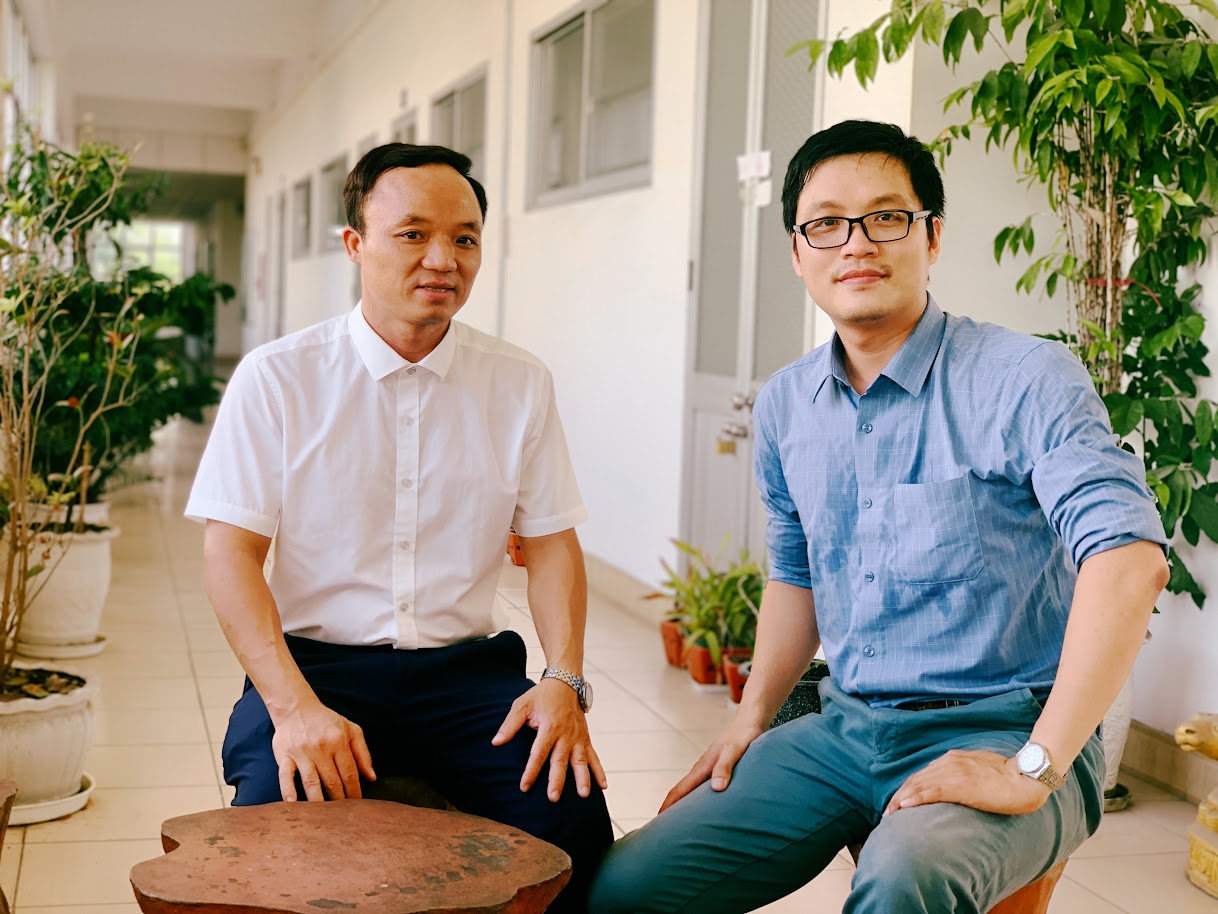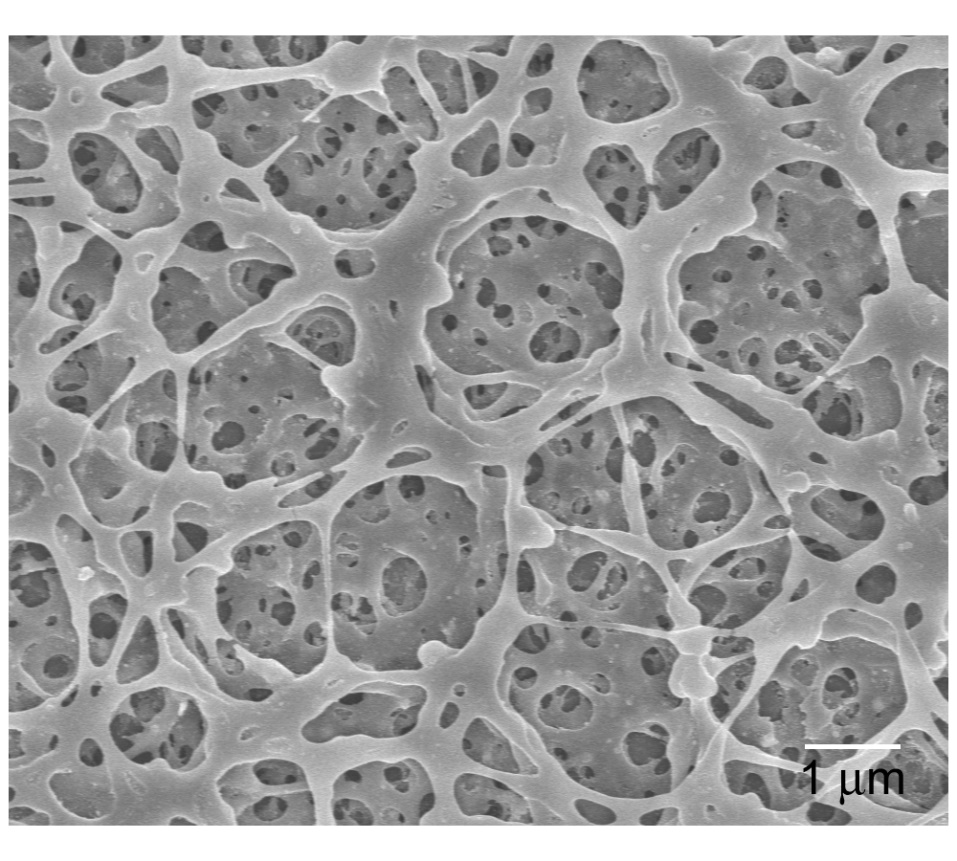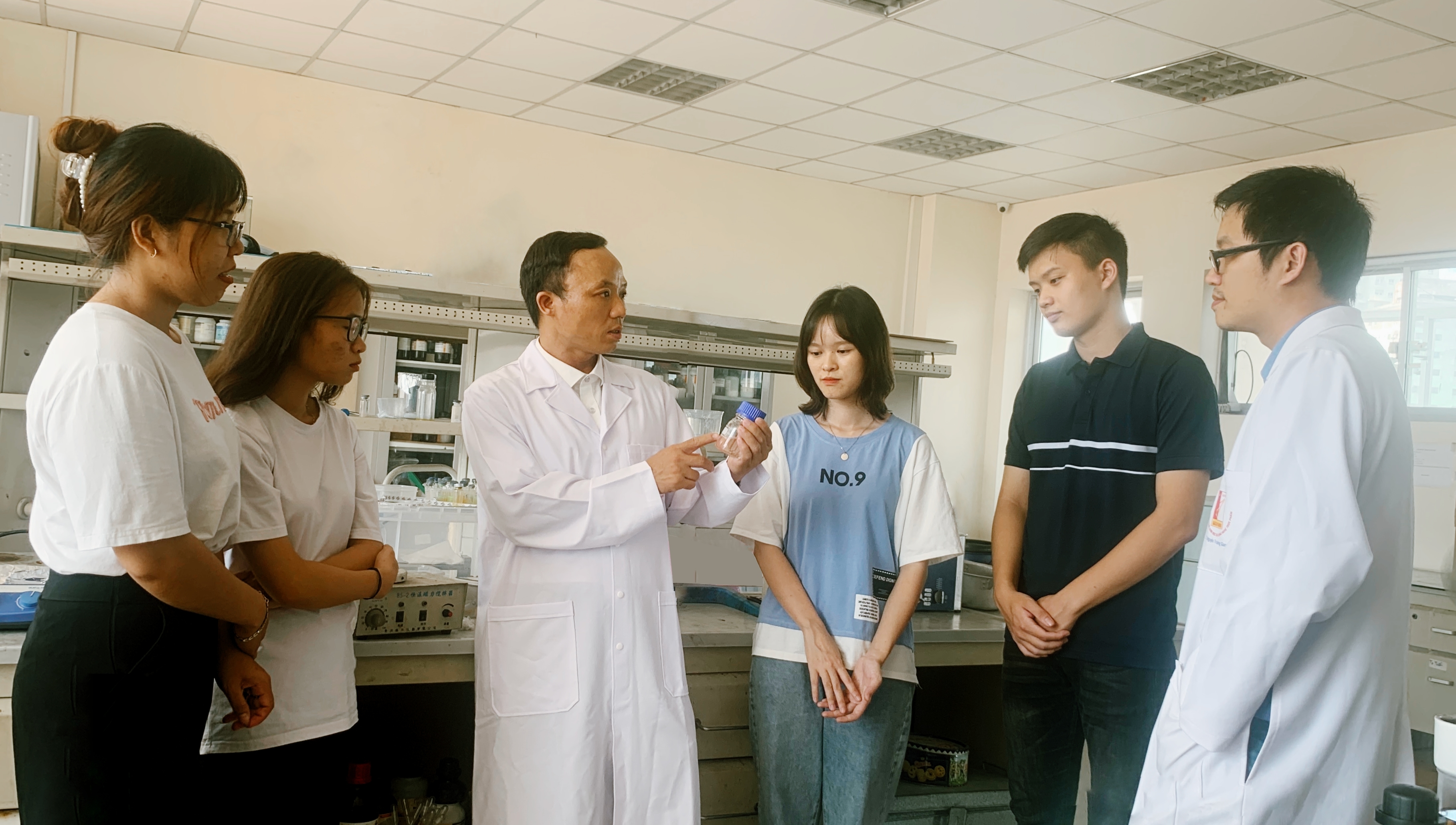Two scientists from HUST make the biomedical membrane
- Sunday - 28/08/2022 18:01
- Close page

Two scientists from HUST: Assoc. Prof. Pham Hung Vuong (International Training Institute for Materials Science), Principle Investigator, and Dr. Nguyen Truong Giang (School of Biotechnology and Food Technology) have successfully researched and manufactured a biomedical membrane for the treatment of open wounds using a composite material Polyethylene glycol-Chitosan- nano-Ag.
Hit 2 targets with 1 arrow
For open wounds, inflammation is one of the main reasons that inhibit the healing process of patients when a biomedical membrane is indicated.
Polyethylene glycol (PEG) is a biopolymer material that is very friendly to living organisms and tissues, with great potential to be used to fabricate biomedical dressing to help the healing process of open wounds.
Since the mechanical properties of PEG are not high, the research team combined PEG with silver nanoparticles (Ag) - a substance with good antibacterial activity - to increase the effectiveness of inflammation inhibition of the biomedical membranes.
Using highly dispersed Ag nanoparticles can meet the antibacterial and anti-inflammatory requirements as well as enhances the mechanical strength of the biomedical membranes. It can be said that this success has the effect of 1 arrow hitting 2 targets!
The challenge of the research is to distribute the Ag nanoparticles evenly to increase the mechanical strength as well as the antibacterial effect of the membrane. The research team used Chitosan - a biocompatible biopolymer material to convert Ag metal compounds into Ag nanoparticles with high dispersion and size uniformity.
With more than 10 years of experience in biomedical materials research, Assoc. Prof. Vuong is certain that their research direction will produce biomedical materials of high quality. The mixture of materials, when applied to any surface, forms a real "membrane" with good mechanical strength and flexibility. The membrane also has a porous structure with high roughness, so it is very convenient for biomedical cells to adhere, grow and regenerate.
"Ag nanoparticles are integrated and evenly distributed in the membrane, so they have a high antibacterial effect and do not degrade over time." - Assoc. Prof. Vuong is excited to share.

Microstructure of Polyethylene glycol-Chitosan-Nano Ag biomedical membranes.
It is known that the research team has researched and tested biomedical membranes with 4 different types of bacteria, and all yield very good antibacterial results. The initial survey showed that the fabricated biomedical membrane has high antibacterial properties against gram-negative (Enterobacter aerogenes, Escherichia coli) and gram-positive (Listeria monocytogenes, Staphylococcus epidermidis) strains.
The base materials used to make the biomedical membranes are not new. What’s new is the successful combination of 3 component materials: PEG, Chitosan, and silver Ag nanoparticles to create biomedical membranes, increasing the efficiency of the membrane in biomedical applications.
“This is an original, exploratory study that lays the groundwork for further studies, especially on biology,” said Assoc. Prof. Pham Hung Vuong.
The novelty of this study was recognized by the editorial board and international reviewers when the group's scientific paper was published in an international scientific journal belonging to the SCIE group.

Assoc. Prof. Pham Hung Vuong and Dr. Nguyen Truong Giang guide students at the laboratory
Choose the topic to utilize equipment
The research topic of Assoc. Prof. Pham Hung Vuong’s group is part of the project Support for Autonomous Higher Education Project (SAHEP) by the World Bank. Not only funding research, SAHEP also supports HUST lecturers and students to upgrade facilities, research equipment, and laboratories...
Assoc. Prof. Pham Hung Vuong said that one of the reasons his team chose the biomedical membrane topic is to utilize the equipment of the Biomedical Materials Laboratory under the SAHEP project once they were installed and deployed soon. “When the SAHEP equipment arrives, we will test the properties of biomedical membranes at a more in-depth and complex level, especially biocompatibility,” Assoc. Prof. Vuong affirmed.
With the support equipment of SAHEP, HUST scientists in the biomedical field will be equipped with a confocal laser scanning microscope, a modern device allowing in-depth observation and analysis of various complex intracellular organizations at the microscopic level through fluorescent staining techniques.
By this technique, different cell organizations can be displayed on the same image, thus greatly assisting the in-depth study of cell structure and biocompatibility of materials at the laboratory scale.
In addition, several other tests such as cell proliferation and differentiation are also performed when the equipment of the biomedical laboratory comes into operation.
With the researchers' burning passion for scientific research and the equipment from the SAHEP project, it is hoped that the research process can be accelerated and the biomedical membrane results of two scientists from HUST will soon be widely used.
Communication and Branding Office